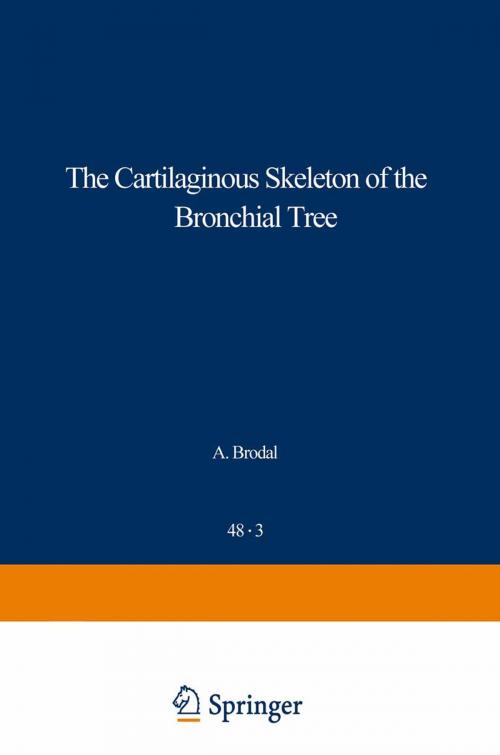The Cartilaginous Skeleton of the Bronchial Tree
Nonfiction, Health & Well Being, Medical, Specialties, Pulmonary & Thoracic, Science & Nature, Science, Biological Sciences, Zoology| Author: | F. Vanpeperstraete | ISBN: | 9783642952524 |
| Publisher: | Springer Berlin Heidelberg | Publication: | December 6, 2012 |
| Imprint: | Springer | Language: | English |
| Author: | F. Vanpeperstraete |
| ISBN: | 9783642952524 |
| Publisher: | Springer Berlin Heidelberg |
| Publication: | December 6, 2012 |
| Imprint: | Springer |
| Language: | English |
A review of the publications, dealing with the morphology of the cartilages of the tracheo-bronchial tree, shows how scarce they are and how fragmentary the contributions based on research. Isolated parts only of the bronchial tree have been investigated, mostly in single specimens or small series. Anatomical textbooks merely state that the trachea and main bronchi are supported by rings and the more distal branches by irregular, circumferentially placed plates which become smaller towards the periphery, until they disappear in the bronchioli. It is at once obvious that this old-time view is not only superficial, but it leaves one completely ignorant about the site where rings cease and plates begin. No information is available about the arrangement of cartilages around the bifurcations of the main bronchi and contradictory descriptions are given about the cartilaginous architecture of the lobar bronchi. A more searching study reveals that cartilages are hardly mentioned in the huge amount of literature on bronchial anatomy which has accumulated since 1880. It is therefore not exagerated to say that the study of this subject has been grossly neglected.
A review of the publications, dealing with the morphology of the cartilages of the tracheo-bronchial tree, shows how scarce they are and how fragmentary the contributions based on research. Isolated parts only of the bronchial tree have been investigated, mostly in single specimens or small series. Anatomical textbooks merely state that the trachea and main bronchi are supported by rings and the more distal branches by irregular, circumferentially placed plates which become smaller towards the periphery, until they disappear in the bronchioli. It is at once obvious that this old-time view is not only superficial, but it leaves one completely ignorant about the site where rings cease and plates begin. No information is available about the arrangement of cartilages around the bifurcations of the main bronchi and contradictory descriptions are given about the cartilaginous architecture of the lobar bronchi. A more searching study reveals that cartilages are hardly mentioned in the huge amount of literature on bronchial anatomy which has accumulated since 1880. It is therefore not exagerated to say that the study of this subject has been grossly neglected.















